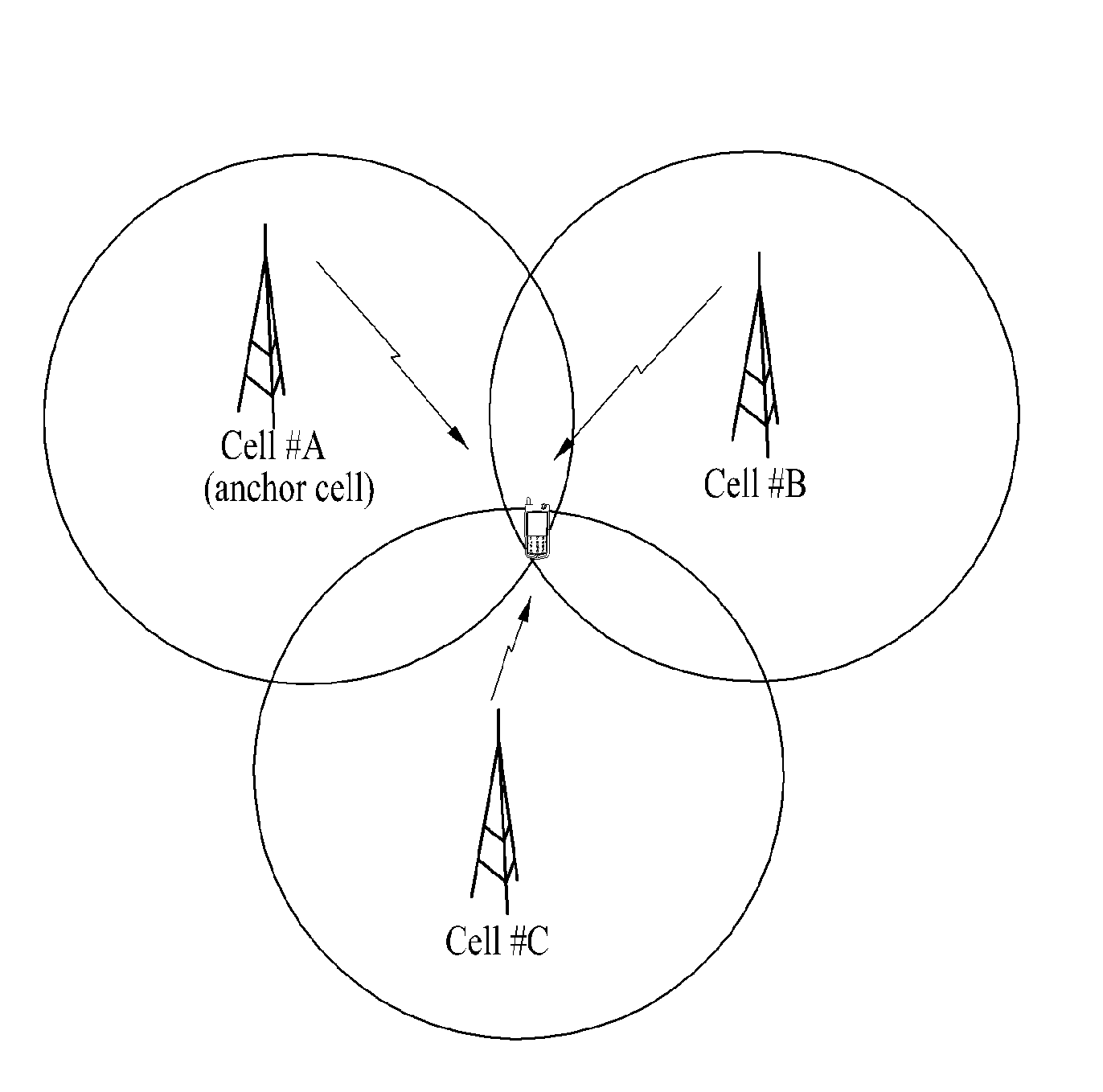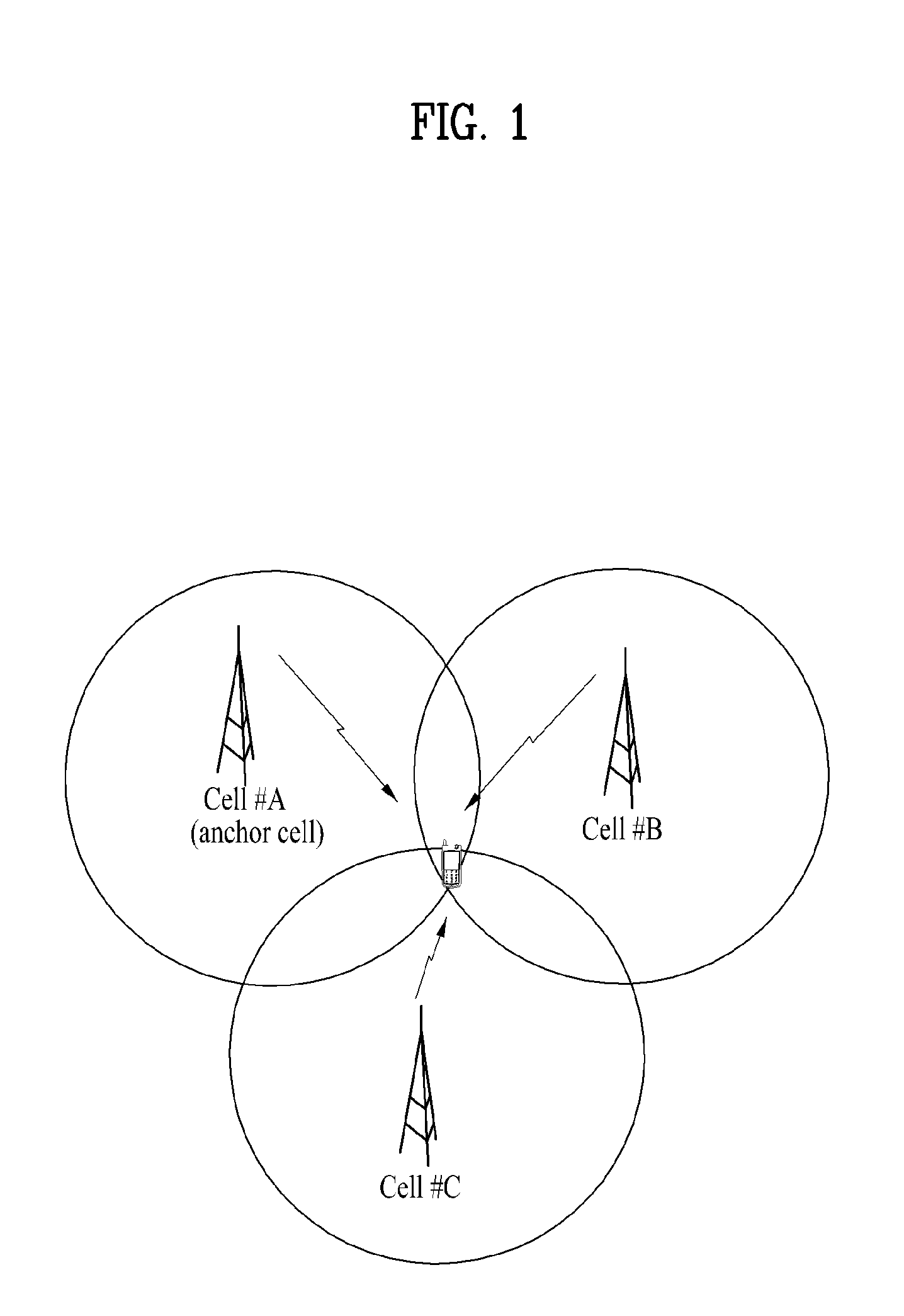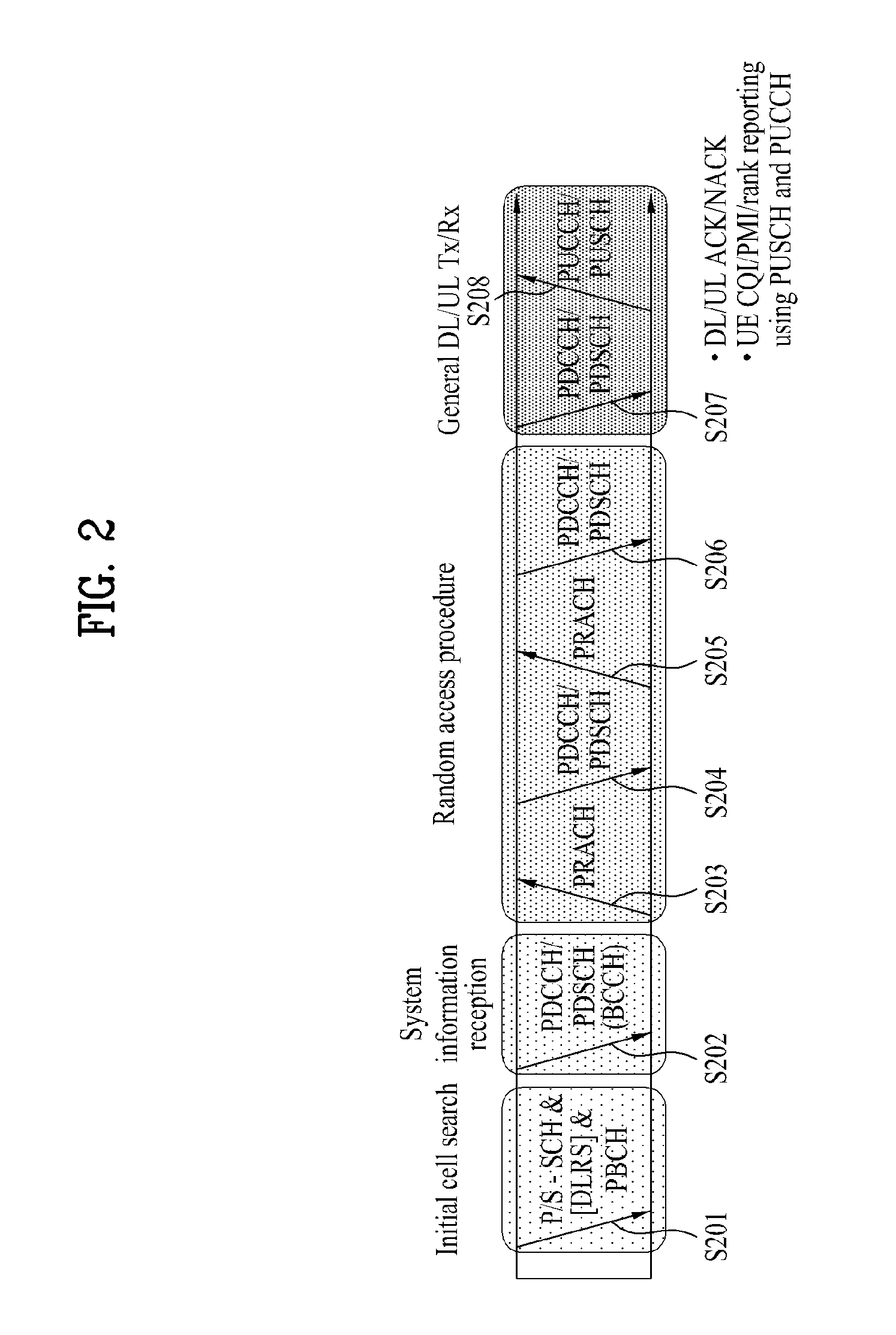Method for transmitting location based service -reference signal in wireless communication system and apparatus therefor
a wireless communication system and location-based service technology, applied in the field of wireless communication systems, can solve the problems of time delay and reception power of lbs-rs, and achieve the effect of reducing the number of times of lbs-rs
- Summary
- Abstract
- Description
- Claims
- Application Information
AI Technical Summary
Benefits of technology
Problems solved by technology
Method used
Image
Examples
first embodiment
[0061]A method for compensating for a path loss encountered when a plurality of cells transmit LBS-RS to an MS will hereinafter be described with reference to the first embodiment of the present invention.
[0062]FIGS. 6 and 7 illustrate a path loss encountered in signals received from a plurality of cells according to the present invention. In the above-mentioned process for measuring the MS location, there is a need to receive LBS-RSs from one or more cells (preferably, three or more cells). For convenience of description, the following considers only two cells, that is, a serving cell and a target cell.
[0063]Under the condition that the MS is connected to a serving cell, if the MS receives LBS-RSs from both the serving cell and the target cell, the following first and second cases may be used.
[0064]The first case is shown in FIG. 6. In FIG. 6, a path loss derived from the serving cell (cell #A) is similar to another path loss derived from the target cell (cell #B). The second case ...
second embodiment
[0068]The second embodiment of the present invention is devised to prevent interference between signals caused by a propagation delay of the LBS-RS transmitted from each cell.
[0069]First, propagation delay will hereinafter be described in detail. FIG. 8 is a conceptual diagram illustrating a propagation delay generated in a signal transmitted from a plurality of cells according to the second embodiment of the present invention.
[0070]Referring to FIG. 8, even though a first cell A and a second cell B have transmitted respective transmission (Tx) signals at the same time, it should be noted that the transmission (Tx) signals may be received in the MS at different time points according to individual propagation paths. Specifically, FIG. 8 illustrates an exemplary case wherein the MS is located close to the cell A, and a signal received from the cell B is higher than another signal received from the cell A. Accordingly, signals received from different cells may be received in the MS at ...
third embodiment
[0077]In order to allow the MS to measure a delay time of a signal transmitted from the target cell without detecting a boundary between subframes of the same signal, the serving cell may inform the MS of both the target cell ID and a rough subframe time point. In this case, the rough subframe timing may be determined by a target cell ID, a subframe number of a serving cell, and a system frame number. In addition, the serving cell may inform the MS of not only a bandwidth of the LBS-RS transmitted from the target cell but also the location of a frequency where the LBS-RS is allocated. By means of the above-mentioned information, a search process indicating which one of target cells participates in location measurement and a synchronization process for signal measurement may be omitted from the LBS-RS detection process of the MS.
[0078]Information required for measuring the MS location may be broadcast by the serving cell. In this case, information being broadcast by the serving cell ...
PUM
 Login to View More
Login to View More Abstract
Description
Claims
Application Information
 Login to View More
Login to View More - R&D
- Intellectual Property
- Life Sciences
- Materials
- Tech Scout
- Unparalleled Data Quality
- Higher Quality Content
- 60% Fewer Hallucinations
Browse by: Latest US Patents, China's latest patents, Technical Efficacy Thesaurus, Application Domain, Technology Topic, Popular Technical Reports.
© 2025 PatSnap. All rights reserved.Legal|Privacy policy|Modern Slavery Act Transparency Statement|Sitemap|About US| Contact US: help@patsnap.com



